Well, actually you heard it from me first in video form in Phones Show 356 here, many months ago. But for clarity, let's put everything together in text form here.
If 2018 was the year of the notch, 2019 is claimed to be the year of the folding phone - for good or bad, as it turns out. Now, I saw the benefit of notched screens (you get to use the ears either side of the central notch for extra content), and had no issues with the iPhone Xs Max and Pixel 3 XL, for example, both of which I used for a month in reviewing/testing.
And, in theory, I can see the benefit of folding screens, as we'll come to below when looking again the Andromeda/Surface Mobile patents. The sheer geek value in taking a phone and unfolding it horizontally has appealed to most of us throughout the smartphone years. The old Nokia Communicators wetted the appetite, two screens and a full QWERTY keyboard, there were outrageous designs like my old Nokia N93, which folds in about four different ways, also with two screens but with T9 keypad and centred around a barrel super-camera (for its day, 2006-ish).
Then, more recently, we had the Android-running Gemini PDA, just the one screen, but a true clamshell design. Then the ZTE Axon M, at least in the USA, so I haven’t touched one, an attempt at two separate external screens coming together to form a mini-tablet. It gained universally poor reviews, though, with the large hinge gap proving a barrier to tablet use, with worries over damage to both screens in day to day use, and with many software issues in the unusual form factor. ZTE was onto something though, and I'll come back to this below, obviously.
Samsung is closest to production with its Galaxy Fold. A small external screen for taking calls and looking up quick things, plus a folding 7.3” AMOLED panel inside. There’s a battery in each half of the phone, as it were, so both halves are the same thickness. The concept’s certainly appealing - a phone sized phone much of the time and then a relatively large square display when you need it - so web browsing, social media, gaming, watching media, and so on. But the display folds around a very tight radius of curvature and this is the obvious weak point, mechanically.
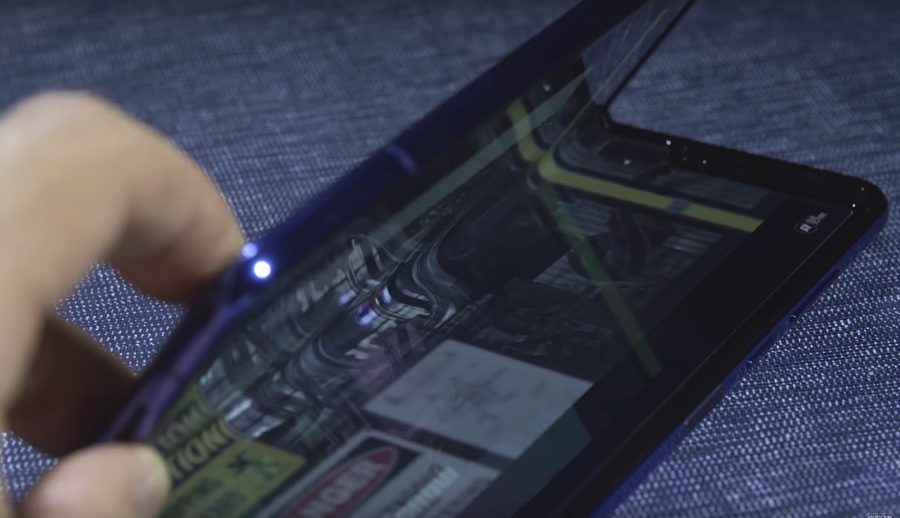
Then there's Huawei's Mate X, with a single huge 8" folding display that curves around the outside of a hinge. This has the benefit of a larger radius of curvature than in the Galaxy Fold, so there's less likely to be damage from repeated folding, but with the downside that the fragile/soft folding panel is always exposed, so it's susceptible to damage.
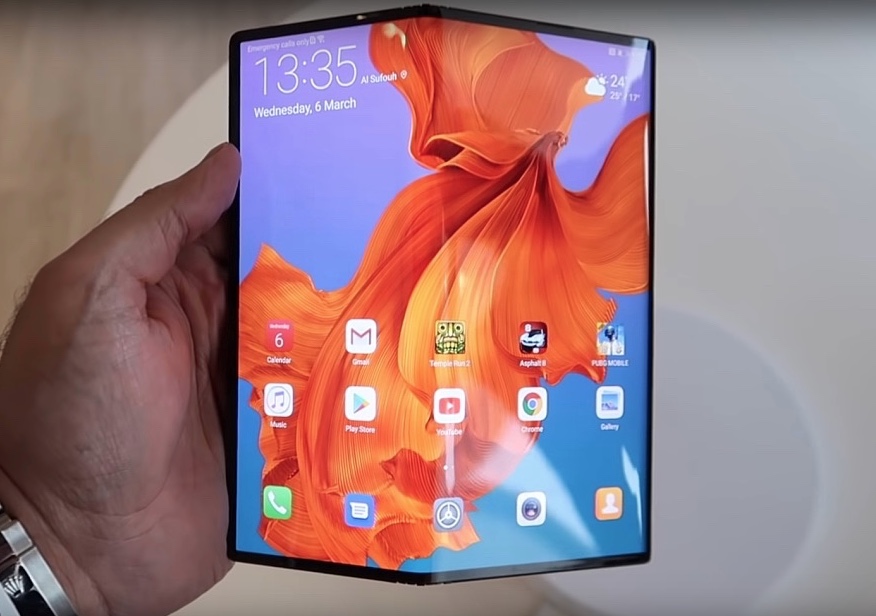
The Galaxy Fold has already been tested by prominent media and found to be appallingly unreliable (so far), with debris and detritus easily getting 'under' the folding display and with the display itself seemingly held together by a fragile layer of peelable plastic. It's been a PR disaster for Samsung and the release date has been pushed back well into June (from April).
The Huawei Mate X was scheduled for June 2019 anyway, so in theory the two designs could appear at the same time. IF the companies can get folding screens to work in a reliable production setting at all. I remain sceptical.
Complex things hate being bent. It's physics.
The most interesting part of the Galaxy Fold launch (I was there) for me was the brief animation of the special hinge mechanism designed to space the two rotating phone sections. Ditto the Mate X, which also has a special collapsing mechanism to ensure tension is kept equal around the whole of the screen curve as the Mate X is opened out.
Mechanisms, hinges. Lovely. And something that Microsoft has been expert at, with the variable kick stand on the later Surface Pros and also the tilting mechanism in the Surface Studio.
At which point, I again raise the question, why not forget fragile, expensive folding displays altogether and go for two standard glass displays but with curved edges that rotate using a double-hinge to come together to give the illusion of a larger tablet display when needed? This is exactly what we saw in the patents for Surface Mobile in 2017 and 2018 and also rendered nicely by designer David Breyer:
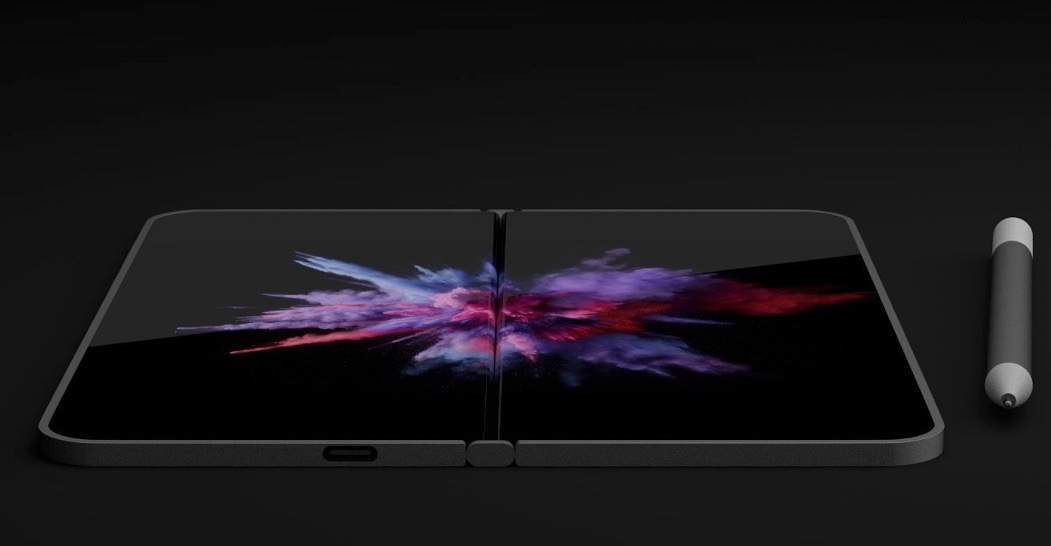
Although the tablet mode is marred a little by the join of the two curved screen edges, I think the use of oleophobic glass rather than 'squidgy' plastic more than makes up for 'being able to see the join'. And, after all, you can clearly see the 'creasing' in the Galaxy Fold and Mate X
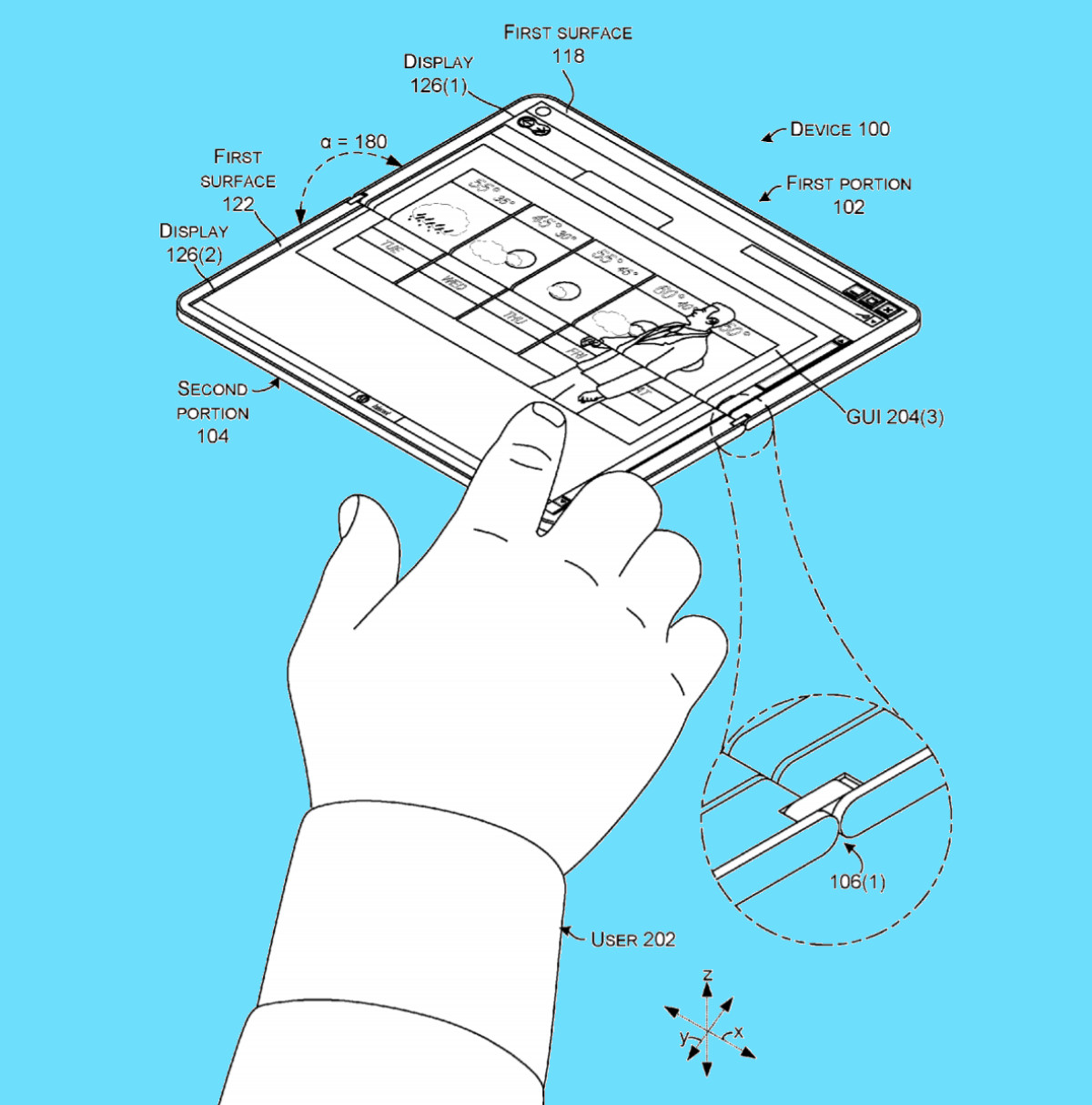
And this was Microsoft's patent for the idea, showing the double-hinge above (in flyout) and below (in more detail):

Yes, yes, very Nokia E90-ish. But clearly showing the way the display wraps around, yet keeping the gap minimal between the two flat(ish) glass panels.
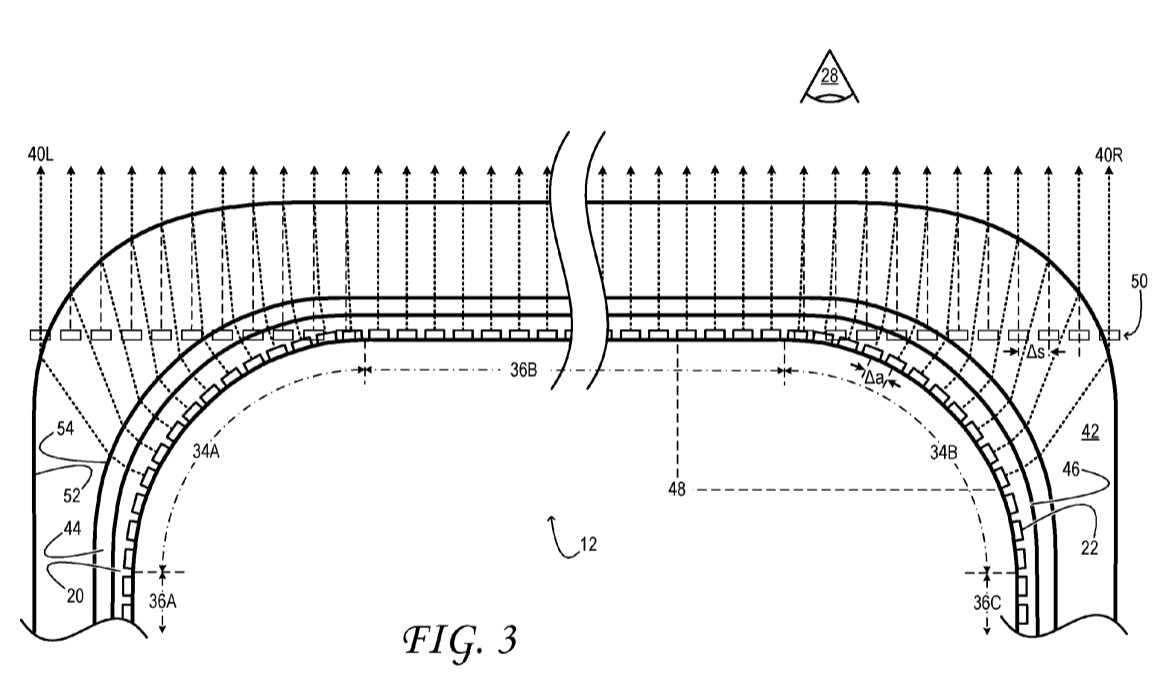
In this patent sketch, the optical refraction effect at the display curved edges shows how light can be 'bent' to provide continuous display right to the edge/join. I don't think that a screen join could ever be removed from sight altogether, but it could certainly be disguised in this way...

A final patent sketch from Microsoft, this time showing again how the double hinge would work in cross-section, including the sprung detent in tablet mode (though I don't see why other detents couldn't provide (for example) a laptop mode, too...
When closed, in similar manner to the Galaxy Fold and Mate X, the Andromeda/Surface Mobile design could either be in dual-screen mode (shown below left) with perhaps only one active, or fully protected (shown below, right), giving no access to the displays for dirt and knocks:
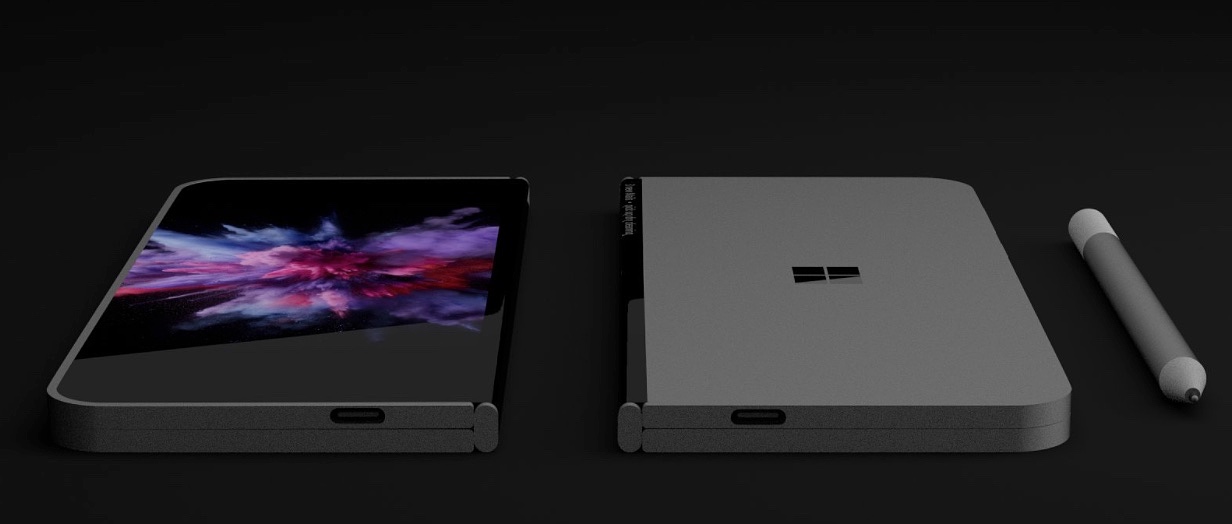
Now, obviously, my points here are illustrated with patent sketches and artist renders alone, but wouldn't you agree that a dual 'flat' screen, double-hinged design like this would be far more practical and likely to survive in the real world than something based on soft and fragile folding plastic?
In short, if you're aiming for a Galaxy Fold or Mate X then you're going to be 'Folding it wrong'.
Comments?
